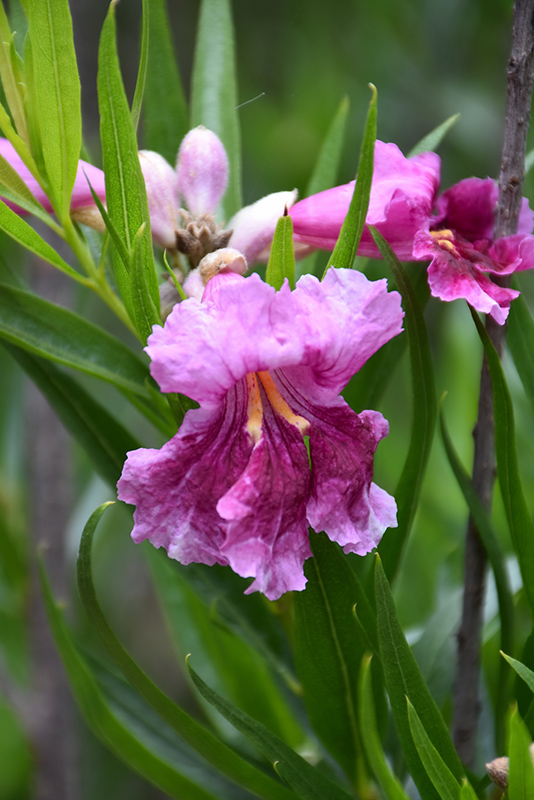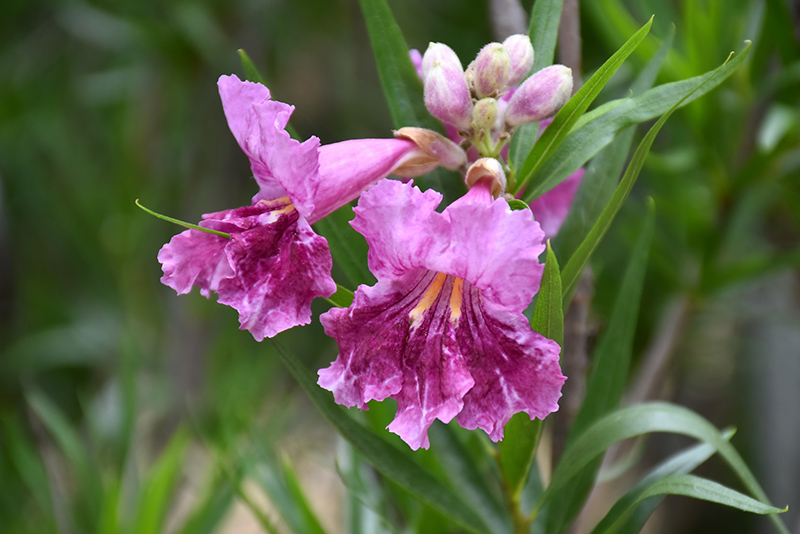>> Home
Bubba Desert Willow
Chilopsis linearis 'Bubba'
Height: 30 feet
Spread: 30 feet
Sunlight:
![]()
![]()
Hardiness Zone: 6
Description:
A multi-stemmed selection that can be trained to a single trunk; fragrant, enormous lavender-rose blooms from late spring until fall; produces fewer of the weeping pods that persist into winter; drought tolerant, watering should be deep and infrequent
Ornamental Features
Bubba Desert Willow features showy clusters of fragrant rose trumpet-shaped flowers with lavender overtones and yellow throats at the ends of the branches from late spring to early fall. It has emerald green deciduous foliage. The narrow leaves do not develop any appreciable fall color. However, the fruit can be messy in the landscape and may require occasional clean-up.
Landscape Attributes
Bubba Desert Willow is a multi-stemmed deciduous tree with an upright spreading habit of growth. Its relatively fine texture sets it apart from other landscape plants with less refined foliage.
This tree will require occasional maintenance and upkeep, and should only be pruned after flowering to avoid removing any of the current season's flowers. Deer don't particularly care for this plant and will usually leave it alone in favor of tastier treats. Gardeners should be aware of the following characteristic(s) that may warrant special consideration;
- Self-Seeding
Bubba Desert Willow is recommended for the following landscape applications;
- Accent
- Shade
- Hedges/Screening
Planting & Growing
Bubba Desert Willow will grow to be about 30 feet tall at maturity, with a spread of 30 feet. It has a low canopy with a typical clearance of 3 feet from the ground, and is suitable for planting under power lines. It grows at a medium rate, and under ideal conditions can be expected to live for 50 years or more.
This tree does best in full sun to partial shade. It is very adaptable to both dry and moist growing conditions, but will not tolerate any standing water. It may require supplemental watering during periods of drought or extended heat. It is not particular as to soil pH, but grows best in sandy soils. It is somewhat tolerant of urban pollution. This is a selection of a native North American species. It can be propagated by cuttings; however, as a cultivated variety, be aware that it may be subject to certain restrictions or prohibitions on propagation.

